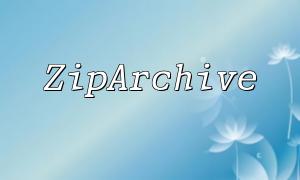Design patterns are widely used solutions in software development that address common problems, significantly improving code reusability, maintainability, and scalability. In PHP development, design patterns also play a key role. This article explores several common design patterns and discusses how to understand and apply them in PHP development.
Design patterns are best practices that offer generalized solutions to recurring problems in software development. They can be categorized into three main types: Creational patterns, Structural patterns, and Behavioral patterns. Creational patterns focus on object creation processes, Structural patterns focus on the relationships between objects, and Behavioral patterns focus on interactions between objects and their responsibilities.
The Singleton pattern is a Creational pattern that ensures a class has only one instance and provides a global access point to that instance. In PHP development, the Singleton pattern is often used for managing shared resources or configuration information. For example, a database connection class can use the Singleton pattern to ensure only one database connection instance is created and accessed globally. In PHP, Singleton can be implemented using static variables and static methods.
The Factory pattern is a Creational pattern that decouples the process of object creation from the object’s usage. In PHP, the Factory pattern is often used to create complex objects or object collections. For instance, a user management system might use the Factory pattern to create user objects. PHP can implement the Factory pattern using static methods or abstract factory classes.
The Observer pattern is a Behavioral pattern that defines a one-to-many dependency between objects. When the state of one object changes, all dependent objects are notified and updated automatically. The Observer pattern is often used in event-driven programming in PHP. For example, an email sending service can use the Observer pattern to notify all subscribers. The pattern can be implemented using interfaces and abstract classes in PHP.
The Adapter pattern is a Structural pattern that allows one class interface to be converted to another. It is commonly used to adapt incompatible interfaces between objects. For example, if you have a MySQL database class and want to make it compatible with Redis, the Adapter pattern can be applied. In PHP, the Adapter pattern can be implemented by combining interfaces and classes.
The MVC pattern is a Structural pattern that divides an application into three components: Model, View, and Controller. The Model handles data processing, the View is responsible for displaying data, and the Controller coordinates the interaction between the Model and View. MVC helps to organize code more effectively, making it easier to maintain and extend. In PHP development, MVC is widely used in web frameworks, such as the Laravel framework, which follows the MVC architecture.
Design patterns play a critical role in PHP development, helping developers write flexible, scalable, and reusable code. This article introduced several common design patterns and discussed how to understand and apply them in PHP development. Although design patterns provide effective solutions in many scenarios, developers should choose the appropriate pattern based on their specific needs. By applying design patterns effectively, developers can enhance their productivity and improve code quality.









